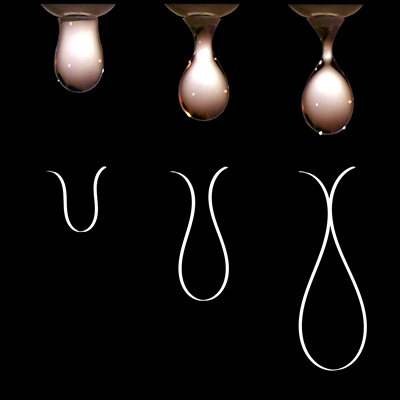
|
A rod covering a fixed span is loaded at the middle
with a transverse force, such that with increasing
load a progressive deflection occurs. After a certain
initial deflection, a phenomenon is observed where
two points of the rod come in contact with each other.
This is defined as the 'dripping point' and is when
'self-encapsulation' of the elastic rod occurs. Dripping
seems at a first glance to be impossible and definitely
cannot occur in the presence of ‘ordinary’ constraints
(such as simple supports or clamps) at the ends of
the span. However, the elastica governs oscillating
pendulums, buckling rods and pendant drops, so
that a possibility for self-encapsulation might be
imagined. This phenomenon is indeed demonstrated
(both theoretically and experimentally) to occur when
at least one of the constraints at the ends of the rod
is a sliding sleeve. This mechanical device generates a
configurational force, causing the dripping of the rod,
in a fully elastic set-up.
|
